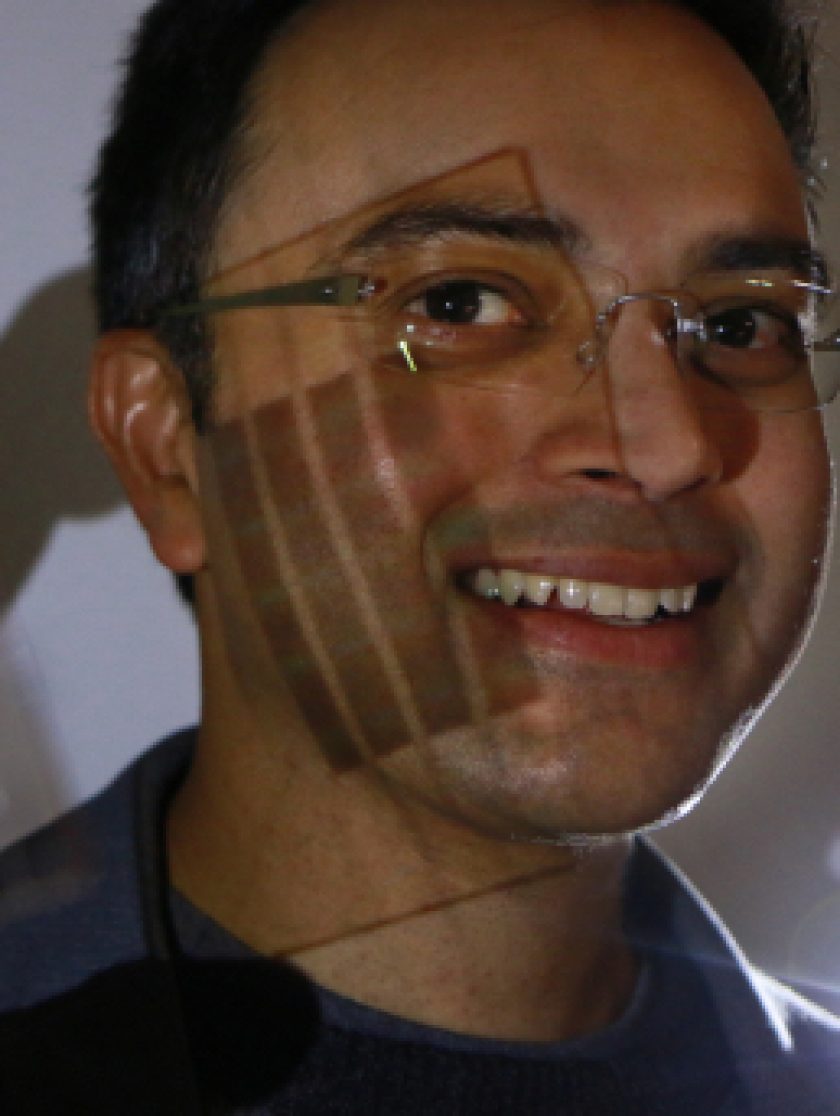Bio
Rajesh Menon combines his expertise in nanofabrication, computation and optical engineering to impact myriad fields including super-resolution lithography, metamaterials, broadband diffractive optics, integrated photonics, photovoltaics and computational optics. His research has spawned over 120 publications, over 40 patents, and 4 spin-off companies. Rajesh is a Fellow of the Optical Society of America, and Senior Member of the IEEE and the SPIE. Among his other honors are a NASA Early Stage Innovations Award, NSF CAREER Award and the International Commission for Optics Prize. He currently directs the Laboratory for Optical Nanotechnologies at the University of Utah. He received S.M. and Ph.D. degrees from MIT.
Abstract
Micro- and nanostructures have recently been widely applied to enhance the performance of optical components and systems. Structures whose characteristic dimensions are greater than the wavelength of interest, ⅄, can effectively manipulate the scalar properties of light, while nanostructures with dimensions << ⅄/2 can manipulate the vector properties of light. Computational techniques, such as nonlinear optimization, coupled with electromagnetics modeling can drive the designs of novel optical and photonic components and systems. When guided by manufacturing constraints, such techniques can result in highly practical, low-cost, ultra-compact (on the order of ⅄ x ⅄) and multi-functional integrated-photonics components, such as polarization beam-splitters [1], wavelength splitters [2], couplers [3], waveguide bends, etc. We’ll also describe a nanophotonic cloak that enables two devices to be placed closer together than is otherwise feasible, leading to an increase in integration density [5]. Applying these techniques at the microscale (> ⅄ regime) has resulted in flat super-achromatic lenses [6,7], planar spectrum-splitting solar concentrators [8], and ultra-high efficiency displays.
We can recognize the functions enabled by optics and photonics as a form of information manipulation, enabling highly non-intuitive forms of optical systems such as photography with no lenses [9,10] or microscopy with only a surgical needle [11,12] or multi-spectral imaging with a diffractive element [13].
References
- B. Shen, et al., Nat. Photon. 9, 378 (2015).
- A. Y. Piggott, et al., Nat. Photon. 9, 374 (2015).
- B. Shen, et al., Opt. Exp. 22(22) 27175 (2014).
- B. Shen, et al., Opt. Lett. 40(24) 5750 (2015).
- B. Shen, et al., Nat. Commun. 7, 13126 (2016).
- P. Wang, et al., Sci. Rep. 6, 21545 (2016).
- S. Banerji, et al., Optica, 6(6) 805-810 (2019).
- P. Wang, et al., Prog. Photovolt. 23(9) 1073 (2015).
- G. Kim & R. Menon, Opt. Exp. 26(18), 22826 (2018).
- G. Kim , et al., Appl. Opt. 56(23) 6450 (2017).
- G. Kim , et al., Sci. Rep.. 7, 44791 (2017).
- G. Kim, et al., Appl. Phys. Lett. 106, 261111 (2015).
- P. Wang & R. Menon, Optica, 2(11) 933 (2015).


